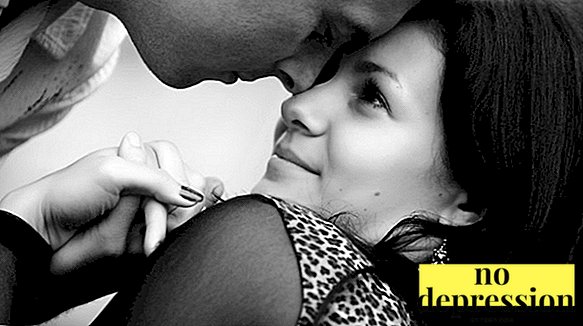Attention is an important element of human consciousness.
There are certain mechanisms for organizing this process.
Individual characteristics

Attention in psychology - This is the concentration of consciousness, focus on the object of value.
This property of the psyche is an integral part of any possible activity, because it allows to improve the result of key processes - memorization, thinking, imagination.
In itself, it cannot exist, since is closely related to other mental functions.
For each person, this property of consciousness is developed to a certain extent, depending on the characteristics of the personality, natural data, and volitional regulation of behavior.
TO individual features Attention include:
- Concentration. It is the ability to focus on a specific question and completely abstract from everything that does not matter at a given time. Concentration can be deep or superficial. The first option is useful in solving one key task and in situations where there is time for a thorough study of the issue. If it is necessary to act quickly, then surface concentration is applied. It allows you to focus on different stages of activity, while maintaining the ability to quickly switch. Deep immersion in the object only hurts, when there is no time to think and the decision must be made quickly.
- Distribution. The ability to simultaneously perform multiple actions. As a rule, a person can perform automatic movements at the same time (brought to the skill level) and engage in mental activity. For example, while driving a car, listen to music and talk with a passenger. The vehicle is controlled automatically, as well as listening to music, and maintaining a conversation requires mental effort. At the same time, it is much more difficult to carry out several types of intellectual activity.
For example, thinking about resolving a complex personal problem and simultaneously having a dialogue on a professional topic is almost impossible.
- Volume. The possibility of simultaneous perception of objects not connected with each other. Moreover, the perception must be clear, clear and conscious. Adults can simultaneously analyze 3-5 objects, and children no more than 4. Constant training will help fix the result at the upper limit, but will not contribute to an increase in this indicator. The amount of perceived information depends largely on the level of understanding of the material, the presence of interest. So, watching the important person for us, we can well remember the nuances of his appearance, and passing by a stranger on the street completely not perceive his image.
- Switching. Conscious transfer of interest from one object to another in order to solve the problem. This property does not depend only on natural data, since it can develop as a result of practical training. Thus, regular work in a multitasking environment gradually develops the ability of a person to quickly transfer attention from one question to another, to think in a complex way.
- Resilience. This is the duration of concentration of consciousness. As soon as the subject of observation ceases to be interesting or its full knowledge occurs, the interest is automatically weakened. Accordingly, the main condition for sustainability is the constant flow of new information. This property is inextricably linked with a high level of intellectual abilities.
The smarter a person is, the more opportunities he has to constantly reveal something new in objects, thereby maintaining enthusiasm for them.


Each individual concentration developing its own way depending on the availability of abilities, capabilities and desire to work on yourself.

Under adverse conditions (features of character and temperament, lack of self-control, illness, pathological dependencies, mental disorders, old age, etc.), the ability to concentrate can greatly decrease.
In this case, appear attention disorders: distractibility, dispersion, excessive activity, inertness.
If a person has one of the listed qualities, the performance of his activity is significantly reduced.
Physiological basis
The basis of physiology are the nervous processes occurring in the brain. These are two processes: arousal.
When an object that is significant at the current time is of interest, there is a weakening or elimination of extraneous stimuli, the signals of which hit areas that are in a state of inhibition.
At the same time, sites that are responsible for interest concentration on the object under study.
I.P. Pavlov, having studied the behavior of animals in nature, concluded that there is an unconditioned orienting-exploratory reflex.
As soon as the animal notices in the surrounding space certain irritantit begins to act in the appropriate way.

A similar mechanism of consciousness can be traced in humans.
Attention directly depends on external stimulithat have an impact on human consciousness.
In people living in society, a similar physiological basis has acquired a more complex shape due to the need to carry out labor activities, participation in other types of social activity.
Mechanisms
According to A.A., Ukhtomsky, there is the dominant focus of arousal is dominant. It is characterized by considerable strength, stability and can direct other foci to itself, absorb them.
The stronger the dominant, the higher the concentration of a person on a particular object and the lower the risk of diverting him to secondary stimuli.
I.P. Pavlov singled out concept of an optimal focus of excitation. It is this level of arousal that allows for an efficient, clear thought process.
With this nature of the work of consciousness, a person retains the ability to switch attention, to quickly respond to changes in the current situation, to work in multitasking mode.

The qualitative characteristics of the dominant, which distinguish it from the optimal focus of excitation - high strength, stability, duration, stability.
This type of thinking is relevant in situations where maximum concentration on a specific task is necessary and full abstraction from all other stimuli is required.
Exists many historical examples how the dominant is manifested in the work of the human brain in practice. Thus, famous artists, composers and inventors could not stay asleep or eat for days during their work.
Their thoughts were so captured by the overriding ideathat all other needs and desires receded into the background. Nothing could distract them from the object of attention until the goal was achieved.
In our time, this behavior can be observed in people who are heavily seized by any issue or idea.
Often the presence of a dominant can be traced in the behavior of children, adolescents. Due to the instability, susceptibility of the psyche, they can be so involved in the important for them at the moment action that they completely stop responding to any external stimuli.
Opposition in the form of requests or threats of parents is perceived as an additional stimulus to increase concentration, that is, dominant absorption of other foci of excitation and its amplification at their expense occurs.
Neurophysiological

Attention is important psychological function.
it mandatory factor effectiveness, the effectiveness of any activity.
It is necessary for a person during the cognition of objects and phenomena, in the development of various motor skills, in the development of abilities to work with numbers, words, and images.
His work is made possible by complex of neurophysiological mechanisms. In the conscious process, motor programs, programs of innate, acquired behavior, and other mechanisms of the brain are used.
During studies of brain activity (electroencephalography), it was noted that when a new stimulus is exposed to a person's consciousness, involuntary attention arises.
There are two types of attention. Briefly about them:
- Arbitrary. This is an active mental activity aimed at achieving the goal. It greatly facilitates the process of implementation of any cognitive activity. Initially, information is entered, which is then analyzed and evaluated. As a result, new knowledge is developed in the form of practical experience, theoretical information, behavioral response, motor skill.
- Involuntary. The passive form of the work of consciousness that arises in response to natural changes in the external environment. Initially, there is a mobilization of the brain, which comes to a state of readiness for the perception of new information. In process of adaptation to a new stimulus, either the extinction of the reaction occurs, or the formation of interest in order to perceive the incoming signals, the organization of the response activity.

So, attention is one of the key properties of human consciousness. The level of development of this ability depends largely on the individual characteristics of a particular person.
In this story you will learn what attention is, how the human brain chooses what to focus on:



